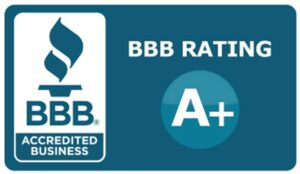More men in America want Testosterone Replacement Therapy (TRT) now because they know more about low testosterone problems. About 13 million American men have low testosterone levels, but only 1 out of 10 gets help. The main reason is that insurance makes it hard to get coverage.
Thanks to TRT, men may have more energy, build muscle, feel better and be interested in sex more often. A lot of men still have trouble getting their insurance companies to cover the costs. In some cases, insurance firms may use complicated ways, have different guidelines or do not pay for TRT. It’s surprising that a few companies don’t see TRT as necessary, ignoring the advice from doctors that men should use it.
Don’t Wait, Reclaim Your Vitality – Click here to Book Your TRT Consultation Now!
This guide gives a full overview of TRT insurance coverage in the year 2025. You will find out what can and cannot be covered, which plans are more useful and what actions to take when insurance rejects your claim. We will also show you how The KIF gives you an easy and cheap way to get TRT without dealing with insurance hassles.
How Insurance Companies Evaluate TRT
Insurance companies have rules they follow before they agree to pay for any treatment. Just like other therapies, TRT is guided by the same regulations. This is the process that insurance companies use to check your eligibility.
Medical Necessity Criteria for TRT
Insurers only give insurance coverage for TRT if they believe it is required for health reasons. You must demonstrate that your health is negatively influenced and not only that low testosterone makes life harder.
Main things you need:
- Confirmed Diagnosis of Hypogonadism: Your condition must be labeled as ICD-10 E29.1 (when testicles do not work right). Your doctor must write this diagnosis in your medical records.
- Two Separate Early Morning Blood Tests: You need two different blood tests that show testosterone levels below normal (usually under 300 ng/dL). These tests must happen on different days, in the morning between 7 and 10 AM, when testosterone is highest.
- Presence of Documented Symptoms: You must have problems like constant tiredness, low interest in sex, trouble getting erections, losing muscle, mood problems, or feeling sad. Insurance wants to make sure your symptoms match your test results.
- Absence of Contraindications: If you have prostate cancer, sleep breathing problems, or other health issues that testosterone might make worse, insurance might say no.
Role of Prior Authorization
Even when you meet all the requirements, insurance companies usually want prior authorization first. This process means:
- Sending in lab results, doctor notes, and treatment plans
- Proving that the treatment follows medical rules
- Explaining why you need TRT instead of other treatments
This step can make you wait 1 to 3 weeks for treatment, especially if your paperwork is missing something or too old.
Types of Insurance Plans and Their TRT Policies
Different insurance plans cover TRT in different ways. Some plans are easier to work with and pay for more, while others have strict limits or do not cover TRT at all.
Let us look at coverage for each major type of insurance.
Medicare
Medicare covers TRT only in certain situations.
Part B pays for testosterone shots given at the doctor's office when prescribed for hypogonadism. Part D might cover gels or patches that you put on your skin, depending on what drugs your plan covers. Medicare does not pay for custom-made treatments or unusual therapies.
Patients usually need paperwork from a doctor who takes Medicare, plus approval ahead of time for gel or patch treatments.
Medicaid
Medicaid coverage for TRT changes from state to state and has more restrictions.
Some states only cover testosterone shots (like testosterone cypionate), and only when the diagnosis is clearly written down. Many states require:
- Proof that other treatments did not work
- Getting sent to a specialist doctor
- Extra lab work or medical exams
Some states will not cover treatments you put on your skin or custom-made medicines.
Private PPO Insurance Plans
PPOs (Preferred Provider Organizations) usually give you the most choices for coverage. They typically let patients:
- Pick their own TRT doctor
- Get some or all money back for different types of TRT
- Fight back if claims get denied when treatment is needed
But you still often need approval first, and your plan's drug list will decide which TRT medicines are approved.
HMOPlans
HMOs (Health Maintenance Organizations) have more rules than PPOs.
You must:
- Stay with doctors in your network
- Use only approved doctors
- Often get referrals from your main doctor first
TRT is usually limited to doctors in your network using standard medicines.
VA and TRICARE
Veterans can get TRT through the VA or TRICARE, but coverage is usually limited to:
- Low testosterone problems connected to military service
- Shots given at VA medical centers
- Gels or patches that are on the approved drug list
Wait times and getting appointments can be long, especially for follow-up blood tests.
What TRT Methods Are Covered (and What Aren't)?
Men who want affordable care that does not stop need to know which methods insurance usually accepts and which ones they do not. This helps avoid surprise costs you have to pay yourself. Let us look at each method closely.
1. Intramuscular Injections (Most Commonly Covered)
Muscle shots of testosterone, like testosterone cypionate or testosterone enanthate, are the most common TRT method that doctors prescribe and insurance covers.
- Why They're Covered:
-
- Cheap Option: Shots cost less than other TRT choices.
- Standard Dosing: Doctors can easily watch and change how much you get.
- Given At Clinic: Insurance likes treatments given at medical offices.
- Coverage Details: Usually covered by Medicare Part B, Medicaid, and most private insurance. Giving yourself shots might need extra paperwork or training approval.
- Drawbacks: You need shots every week or every two weeks. Patients might feel testosterone levels go up and down.
2. Topical Gels and Creams (Moderate Coverage)
Gels (like AndroGel, Testim) are put on skin daily and soak into your blood. These are often included in drug lists for PPO and HMO plans.
- Why They're Covered: FDA-approved with steady brand choices. Less scary than shots. Easy for patients who want to treat themselves at home.
- Coverage Details: Often covered by Medicare Part D or private plan prescription benefits. Might need step therapy, meaning you must try shots first.
- Drawbacks: Can rub off on other people through skin contact. You must use it every day without missing. Costs more than shots if you do not have insurance.
3. Transdermal Patches (Selective Coverage)
Patches like Androderm slowly release testosterone through your skin. They are typically covered under the pharmacy part of insurance plans.
- Why They're Covered: Keep testosterone levels steady. FDA-approved for testosterone problems.
- Coverage Details: Listed in many insurance drug lists. Coverage might need approval first or proof that other treatments did not work.
- Drawbacks: Can make your skin irritated. Doctors do not prescribe them as much, which might make them harder to find.
4. Oral Testosterone Capsules (Emerging and Limited Coverage)
Pills with testosterone undecanoate (like Jatenzo) are newer FDA-approved options, taken twice daily with food. These pills have limited coverage because they are relatively new and cost more than older methods.
- Why They May Be Covered: FDA-approved for low testosterone. Easy to take and patients follow directions better.
- Coverage Details: Not widely included in insurance drug lists yet. Might need special approval or proof that other treatments do not work or cause problems.
- Drawbacks: High cost each month. Possible heart and liver problems with long-term use.
5. Pellet Implants (Rarely Covered)
Pellets are small testosterone-releasing pieces put under your skin every 3 to 6 months. Even though they work well, most insurance companies think they are optional or non-standard treatment.
- Why They Aren't Covered: No big cost advantage over shots or gels. Usually done at outpatient clinics with different quality standards.
- Coverage Details: Almost never paid for by Medicare, Medicaid, or commercial insurance. Patients often pay $500 to $1,000 or more out of their own pocket for each insertion.
- Drawbacks: Needs minor surgery. Risk of infection or the pellet coming out
6. Nasal Sprays (Not Commonly Covered)
Products like Natesto deliver testosterone through the inside of your nose. While easy for some people, nose spray TRT options are not widely accepted or covered.
- Why They Aren't Covered: Less information about long-term safety and how well they work. Limited insurance acceptance.
- Coverage Details: Almost never found in drug lists. Usually not the first choice doctors recommend.
- Drawbacks: You need to use it three times daily. Can make your nose irritated or stuffy.
7. Compounded TRT (Almost Never Covered)
Custom-made testosterone gels, creams, or lozenges are made by special pharmacies. These are not FDA-approved and all insurance plans typically do not cover them.
- Why They Aren't Covered: No FDA regulation and quality control. Insurance considers them "alternative" or "experimental."
- Coverage Details: You pay 100% out of your own pocket. Pricing changes from $80 to $250 per month depending on the pharmacy.
- Drawbacks: Strength can vary. No promise of insurance recognition or support.
What To Do If Your Insurance Doesn't Cover TRT?
Getting denied for TRT coverage makes you angry, but it happens often. Here is what you can do if your insurance will not pay for your treatment.
Request an Appeal
Most insurance companies let you file an appeal if your claim gets denied. You will need:
- Doctor's letter explaining why you need the treatment medically
- Supporting lab test results
- Notes about how bad your symptoms are
Appeals can take 30 to 60 days but are worth trying if you want to keep working with insurance.
Use FSA or HSA Funds
TRT is a qualified medical expense under both Health Savings Accounts (HSAs) and Flexible Spending Accounts (FSAs). You can use pre-tax money to pay for:
- Doctor visits
- Blood tests
- Medicines
- Follow-up appointments
This helps lower how much you actually pay out of pocket.
Consider Self-Pay or Direct-to-Consumer Options
Companies like The KIF offer clear, affordable prices with no insurance needed. You get access to expert doctors, FDA-approved medicines, and delivery to your door without the delays or denials of traditional systems.
Conclusion
TRT coverage through insurance is not consistent in 2025. It depends on what type of plan you have, how clear your diagnosis is, what your doctor prefers, and which treatment method you use. The process is slow, often makes you angry, and full of bureaucratic problems.
Instead, The KIF offers a different option that works: flat-rate TRT plans, expert medical help, and fast results without needing insurance.
- Start Today with Healthcare experts
- Book your Free Consultation
- Begin treatment for $249
- Continue monthly with $149 TRT subscription
FAQs
1. Will All Insurance Companies Cover TRT if I Have Low Testosterone?
No. Even if you have documented low levels in tests, many insurance companies have strict requirements and might still deny coverage if they think it is not essential or just for lifestyle reasons.
2. How Long Does Insurance Approval For TRT Take?
Approval can take 1 to 3 weeks depending on how fast your doctor responds, what documentation is required, and whether you need prior authorization.
3. Are Lab Tests Included In The KIF's Pricing?
Yes, The KIF's $249 new patient plan includes lab testing, first consultation, and a full month of medication without hidden fees.
 Since 2021, Kif offers a streamlined platform to get a medical marijuana card online. We have served more than 45K patients across the United States. Sign Up Now to get the right to use medical cannabis for your health condition without any delay.
Since 2021, Kif offers a streamlined platform to get a medical marijuana card online. We have served more than 45K patients across the United States. Sign Up Now to get the right to use medical cannabis for your health condition without any delay.
























